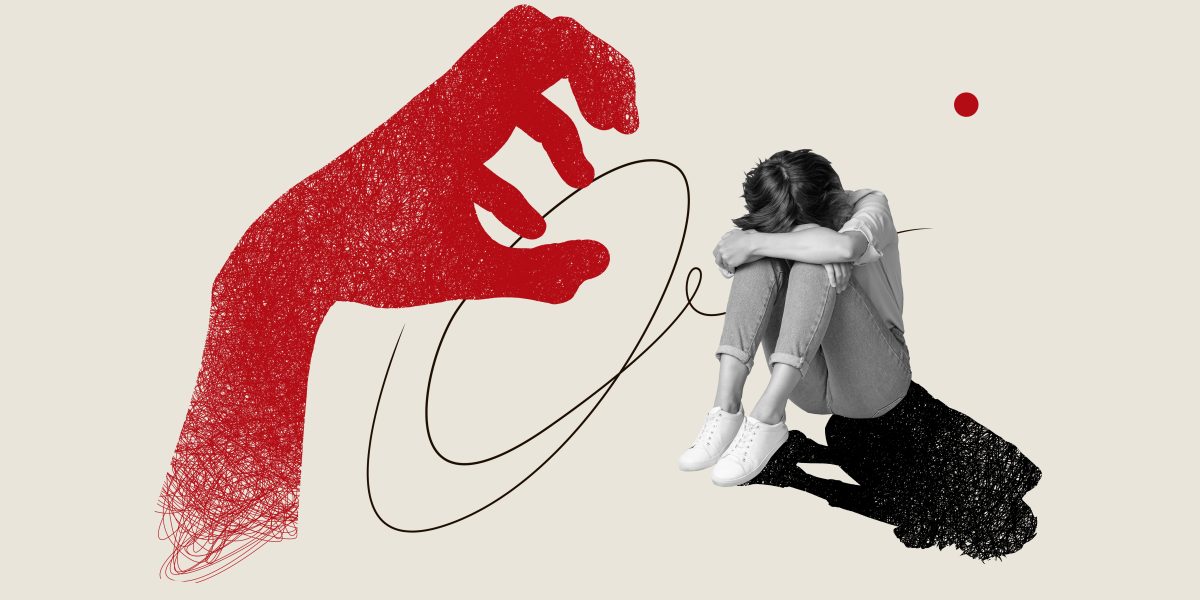
in this article
- Introduction
- It is Normal, Healthy, and Human
- Remember: This Too Shall Pass
- Breathe
- Breathwork
- Scanning and Relaxing the Body
- Change the Posture
- Hum and Tone
- Mantra
- Transforming Anxiety: From Fear to Excitement
- Final Thoughts
Are you 18 or older?
Please confirm that your are 18 years of age or older.
You are not allowed to access the page.

Disclaimer: The views and opinions expressed in this article are those of the authors and do not necessarily reflect the official policy or position of Chemical Collective or any associated parties.
Are you feeling nervous about your psychedelic trip? Got a few butterflies in your tummy?
You are not alone. This is a common experience, even for seasoned psychonauts preparing for a high dose session.
One of the classic tenets of psychedelic use, set and setting, tells us that the “set”, our mindset, plays a huge role in shaping the experience. Ideally, we want to approach our trip feeling positive and calm.
However, anxiety is something that comes to all of us at times. I would even argue it can actually be a good sign heading into a psychedelic trip. I mean, who would not feel at least a little trepidation before stepping into the unknown that comes with five-plus grams of psilocybin mushrooms?
That said, there are things we can do to handle this anxiety, both before and during the trip. These techniques can help ease our nerves leading up to the session and steady us in challenging moments during the experience when fear or discomfort arise. They can help steer us away from unnecessarily negative aspects of our experiences and from feelings that may lead towards a bad trip.
So, what can you do? In this article, I am sharing the top techniques for managing and reducing anxiety before and during a psychedelic session. I will cover mindset shifts, mindfulness and breathwork exercises, postural changes, and key things to keep in mind to help you stay grounded.
My intention with this piece is to reassure you that a little anxiety is normal (and even healthy!), and to equip you with practical tools to minimise it and handle those feelings when they arise.
Before diving into specific techniques, I would like to start with this important reminder: feeling anxious or having butterflies in your stomach before or during a psychedelic trip is completely normal. In fact, I would argue it is healthy.
Psychedelics can radically shift your perception, detach you from the familiar, and, at times, even create a sensation of ego dissolution or dying. Feeling some apprehension in the face of this is perfectly natural. Feeling a sense of nervousness shows you have a healthy respect for their potential. Most bad trips happen because people are not adequately prepared, either mentally or emotionally. A little anxiety can act as a useful cue, reminding you to double-check your preparation and ensure you are as equipped as possible for the experience.
So, if you are feeling nervous, it does not mean there is something wrong with you. Actually, it is quite the opposite. Your body and mind are responding to the understanding of what you may be about to encounter. And the good news when it comes to anxiety is that acute emotional states are temporary.
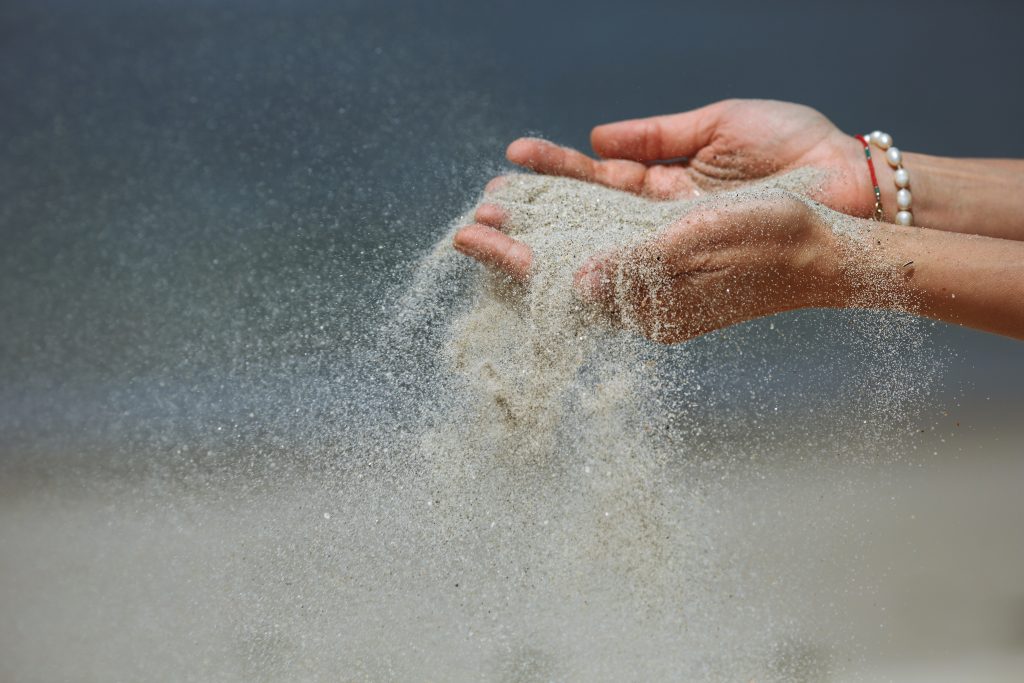
One of the most grounding things to keep in mind during a psychedelic experience is that whatever is happening is temporary.
The effects you are experiencing, whether they are shifts in perception, emotional waves, or changes in your internal world, are brought on by the substance you have taken. And like any substance, the effects have a finite duration. Just as the feeling of being drunk fades after consuming alcohol, the altered state induced by psychedelics will also pass. Worrying that you will stay in the altered state forever is like having some vodka and then worrying that you will be drunk for the rest of your life. The pharmacological effects of the substance will wear off, and you will return to baseline. This simple truth can be incredibly comforting in challenging moments. Reminding yourself “this too shall pass” can help take the sting out of anxiety.
Before your trip, it can be helpful to remember that you will eventually land again. Visualising yourself on the other side of the experience can make it easier to lean into the journey, embrace what comes, and stay as present as possible.
When things feel tough, repeat to yourself: This too shall pass. This too shall pass. it is a small phrase that can have a big impact.
Ah, the classic. If I could give just one piece of advice, it would probably be this: breathe. This is Psychedelic Navigation 101.
When you feel anxiety bubbling up, pause and connect with your breath. This is a cornerstone of Buddhist mindfulness meditation and a simple yet effective way to ground yourself. There are two main approaches to this.
The first is to slow the breath. Intentionally take long, slow, deep breaths. This helps to calm your nervous system. Practice diaphragmatic breathing by focusing on filling your belly with air before your chest. Avoid hunching your shoulders as you breathe. If you are lying down, you can place a hand on your belly, feeling it rise as you inhale and fall as you exhale.
The second approach is to simply rest your attention on your breath without trying to control it at all. Notice the air as it moves in and out. This simple act gives your mind something steady to focus on, rather than spinning into anxious thoughts.
When using the breath, it is important to stick with this for a minute or two before expecting a calming effect to set in. Do not give up after just a few breaths. Simply focus as best you can, and if your mind wanders (which it likely will), gently bring your attention back to your breath, again and again. Better yet, practice this in the days leading up to your session. By incorporating mindful breathing into your preparation, you will build familiarity with the technique, making it easier to access when you are in the midst of a psychedelic journey. Having that practice can make a big difference when it counts.
Following on from breathing, breathwork goes one further. By intentionally controlling and manipulating your breath in various ways, you can influence your nervous system and how you feel. Breathwork can serve different purposes, either to heighten your state of arousal or to bring about calmness. For managing pre-trip anxiety, calming breathwork patterns are best.
Most types of breathwork follow counts for the inhale, exhale, and holds between them.
Here are a few examples of calming breathwork techniques:
This box breathing method is famously used by the U.S. Navy Seals to calm soldiers in high-pressure situations.
Watch a video abo
If you are new to breathwork, I recommend starting with box breathing as it is simple, effective, and easy to remember. You can find guided videos online, such as this 10-minute box breathing practice on YouTube, to help you get started.
While breathwork can be used during a psychedelic experience, it is important to approach it gently. Attempting to strictly control your breath during a session can unintentionally build tension, which can feed anxiety.
If you notice tension arising then shift to a more natural rhythm and focus on slowing your breath while observing it rather than adhering to a strict pattern.
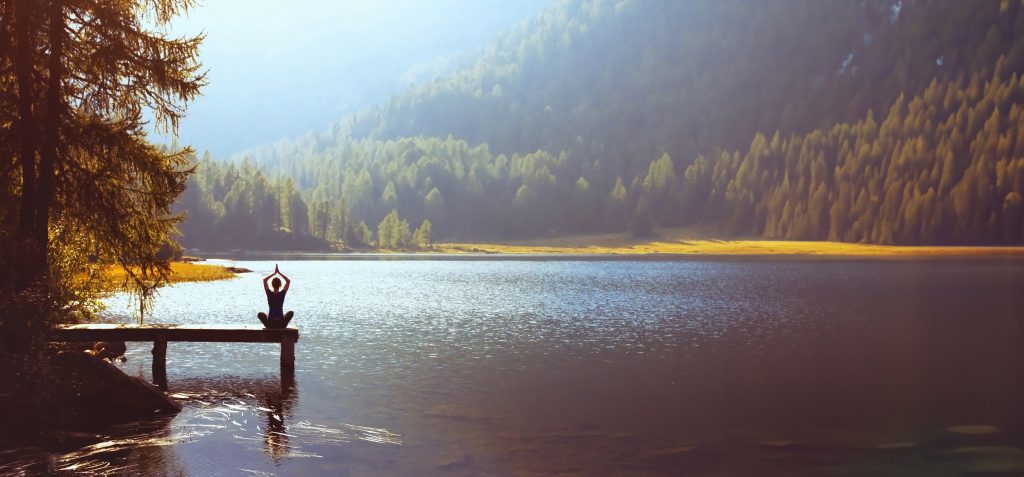
The body scan is another mindfulness practice that can be grounding during a psychedelic experience.
To do this, you bring your attention and awareness to your body; the physical sense of being in your body, here and now. This practice, also known as somatic awareness, can be a way to connect with the present moment and relax tension.
Start by simply bringing attention to how it feels to be in your body right now. What sensations are present? Tune into anything you notice: heat, coolness, dryness, moisture, the touch of clothes or air on your skin, or anything else. Especially notice any tension, tightness, or discomfort that might be present. As you observe these sensations, see if you can relax any tense or tight areas, pairing this awareness with your breath. So as you breathe in, focus on a specific part of your body. As you breathe out, consciously release any tension in that area. For example, breathing in, you can focus on your face. As you breathe out, you relax and release any tension in your face. You can repeat this to your neck, and through your body.
If you want a quick version, you can focus on your jaw, shoulders, and stomach. These areas often carry tension, and a quick scan of them can help bring relief.
If tension persists, that is okay. Sometimes, simply observing and acknowledging those sensations without trying to force them to change can be effective. Let them be, knowing they are part of the moment, and they too shall pass.
As with any mindfulness practice, familiarity helps. Practicing this beforehand, outside of a psychedelic session, can make it easier to access when needed.
Staying with the body, another thing you can do is to actively change your posture. This can help to connect to a place of safety, strength, or surrender.
For example, you may lie on your back, with your legs out and your hands behind your head. This is an open pose, signifying to yourself that you are open to the experience, open to whatever arises and all that it brings. It can be a way to lean into the experience rather than resist it. This can be useful if you notice yourself curled up tight or in a posture that says “I am closed” or is resisting the experience in some way.
If you would like to bring more mindfulness to your experience, you might sit up with your back straight, chin slightly bowed, and shoulders down and relaxed, as if in meditation. This posture encourages alertness while also fostering a sense of calm and presence.
You might kneel and bow your head to the earth to bring about a sense of surrender. It can be seen as adopting a pose of reverence, for the experience, for whatever may come about. It might also be a posture of prayer, bringing prayer hands to your forehead. This acknowledges a force greater than yourself, humbling yourself and surrendering.
Some people also find it helpful to actually pray, asking for help, support, or guidance from wherever it may come from. It might be a higher power, the spirit of the mushrooms, healed ancestors, or internal wisdom. Or it might simply be a way to bring about a sense of humility and surrender.
The function of prayer is not to influence God, but rather to change the nature of the one who prays.
– Soren Kierkegaard
Another one that many people find helpful is to bring a hand to your chest and place it over the heart to connect to the heart center.
Using your voice and vocal cords can also help calm you down as it stimulates the vagus nerve.
The vagus nerve plays a key role in regulating the parasympathetic nervous system, which is responsible for rest, relaxation, and calming the body after stress. Stimulating the vagus nerve through humming or vocalising can activate this system, helping to reduce anxiety, lower heart rate, and promote a state of calm and safety.
It might involve humming, singing, making sounds like ‘aah’, or even just loud sighs. The gentle vibration can be soothing.
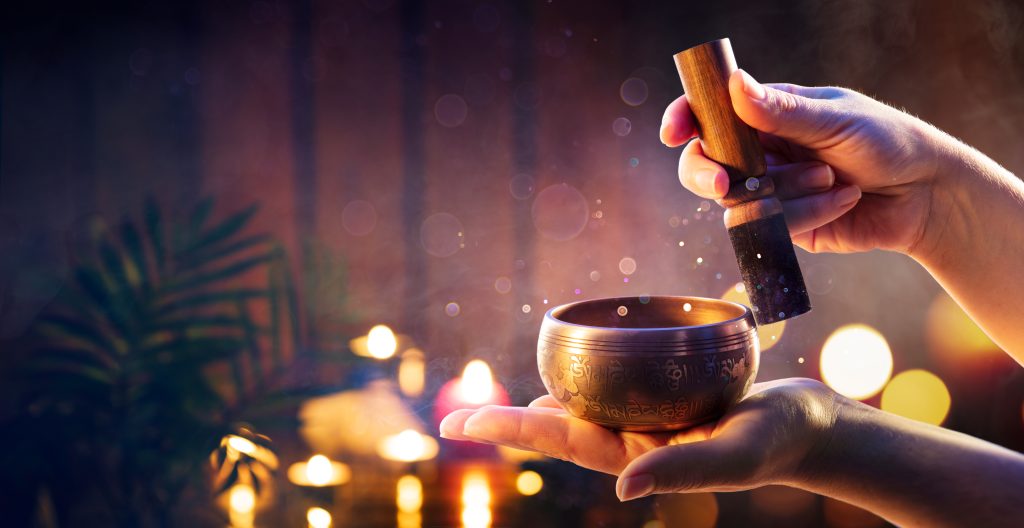
Another technique that uses your voice is mantra. Originating from the spiritual traditions of Hinduism and Buddhism, a mantra is a word or sound repeated to aid concentration during meditation. It is also used in modern spiritual traditions like Transcendental Meditation (TM), where a mantra is recited continuously as the main practice.
Repeating a mantra helps quiet the mind, providing an active focus that occupies the mind and leaves less space for negative or fearful thoughts.
The mantra itself can also carry meaning, offering strength or reinforcing your intention. For example:
Mantras can be spoken aloud or repeated internally, depending on the setting and your personal preference.
Finally, one other way to handle anxiety is by transforming it rather than trying to quell it.
Anxiety is a high-arousal state, so rather than trying to bring yourself down to a low-arousal state, you can shift your perspective to move toward excitement. Excitement is another high-arousal state, but a positive one.
The key here is to reframe your sensations by way of mindset. Rather than seeing butterflies as symptoms of fear, see them as symptoms of excitement. Rather than fearing what will happen, embrace the uncertainty. This is a new experience, it is what you signed up for. Consider it an adventure, because every adventure involves stepping into the unknown. Rather than resist it, embrace it. Relish it, even.
Instead of thinking, “I don’t know what is going to happen? Shit!”, try thinking, “I don’t know what’s going to happen. Exciting! Bring it on!”
Like other techniques here, you can practice this outside of your psychedelic journeys. Whenever you encounter situations that bring up anxiety around the unknown, practice mentally telling yourself, “Exciting! Bring it on!” and embrace stepping into the uncertainty.
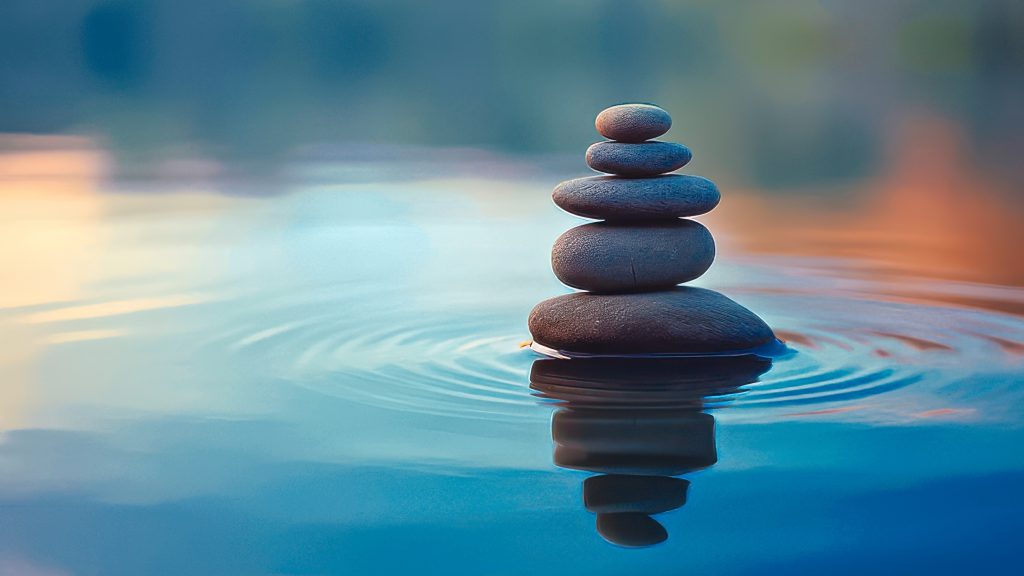
Experiencing anxiety before or during a psychedelic experience is perfectly normal.
The techniques I have covered here, from breathing to adjusting your posture to using mantras, are tools to help guide you through any discomfort that may arise. They can allow you to bring awareness to your body, your breath, and your mind, helping you to stay grounded in the present moment.
In the long term, I always recommend developing something of a meditation or mindfulness practice. This will help you recognize anxiety more quickly and employ these techniques with greater ease and effectiveness.
As you approach your session, try to also approach the experience with patience and self-compassion. You do not need to force yourself into a state of calm. Instead, give yourself permission to feel whatever arises and trust that the tools you have will support you when needed. If you find yourself feeling overwhelmed, return to these practices, and let them guide you back to a place of balance.
And remember, this too shall pass!
John Robertson | Community Blogger at Chemical Collective | mapsofthemind.com
John is one of our community bloggers here at Chemical Collective. If you’re interested in joining our blogging team and getting paid to write about subjects you’re passionate about, please reach out to David via email at blog@chemical-collective.com

Welcome to Chemical Collective.
Create an account to earn 200 welcome points.
Already have an account? Sign in


Check out our Community Blog and get involved with the conversation. You will be awarded 50 x ChemCoins for each comment up to a limit of 250 total ChemCoins.


Have you purchased any of our products? Reviews and reports are so important to the community. Share your honest opinion, and we’ll reward you with 50 ChemCoins for each review!


Every time you complete an order with us, you’ll be awarded ChemCoins for each Euro spent.
Welcome to Chemical Collective.
Create an account to earn 200 welcome points.
Already have an account? Sign in

Earn commission every time someone makes a purchase through your link.
When you become an affiliate, you will be allocated a unique link to share with your friends, followers, subscribers, or Aunt Susan.
You can choose to payout the commission earned once per month, or save it up to receive on a rainy day! Commission earned is 5% of the total order value per referral.
Contact us to join the Chemical Collective family and become an affiliate.
share your toughts
Join the Conversation.
I discovered a type of therapy, Internal Family Systems, during an especially anxious come-up on LSD once. I began speaking to the “part” of me that was panicking and as I assured it that I would be ok and to please just let me surrender to the experience, it completely “stepped aside”. I realized that this panicky part was not all of me, just a part of me, and it wanted to protect me. When it “stepped aside”, another part of me stepped forward to my shock, a shamed inner child, and I was able to connect to it for the first time in my life. It sounds weird in writing but it all made intuitive sense while under the influence.